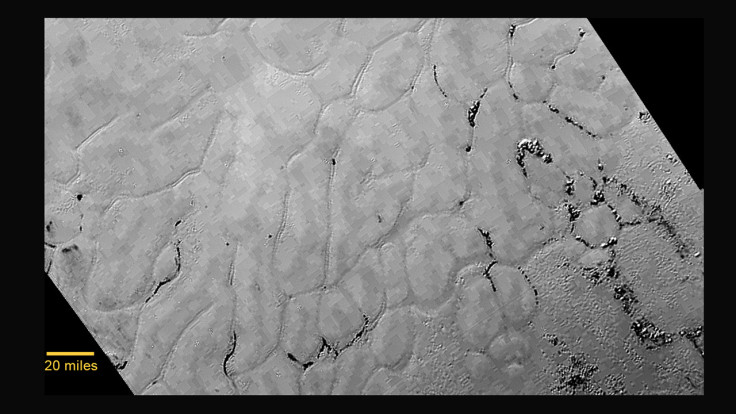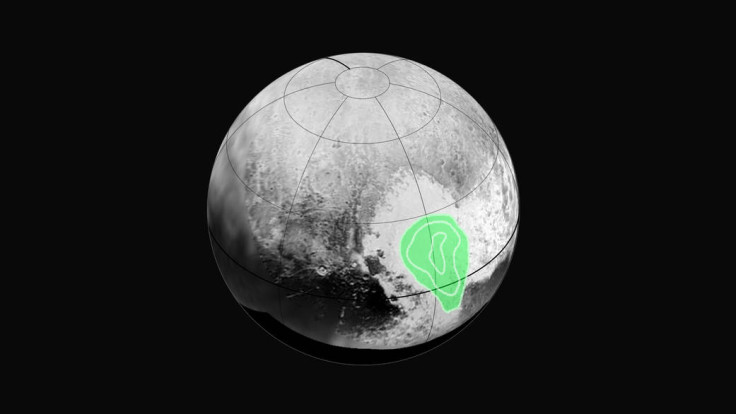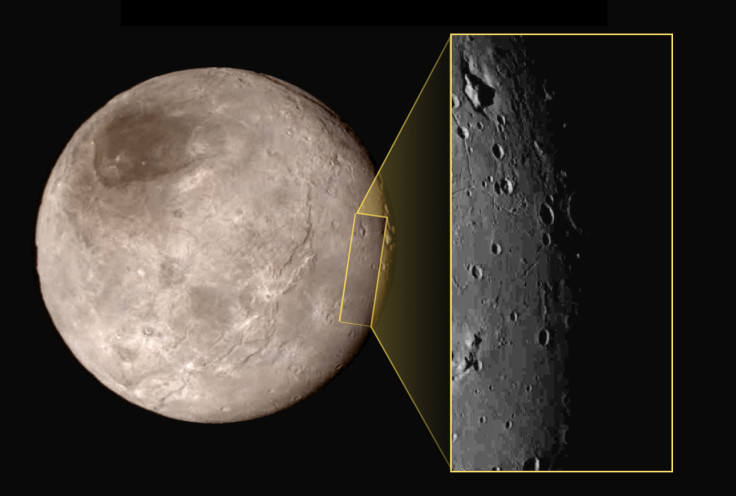New Horizon image of smooth plains on Pluto points to young and active planet

An image taken by Nasa's New Horizon showing smooth icy plains in Pluto's "heart" in addition to the young mountain range clearly indicate that the planet is active and still undergoing changes.
The vast, craterless plain located in the centre-left of the heart feature or Tombaugh regions seems to be no more than 100 million years old and is possibly still being shaped by geologic processes, say scientists at Nasa.
It throws up puzzling questions on the source of heat on frozen Pluto, which is required to reshape surface features.
Surface temperatures on the dwarf planet reach 400 degrees below zero Fahrenheit (-240C).
"We had no idea that Pluto would have a geologically young surface," said lead researcher Alan Stern, with the Southwest Research Institute in Boulder, Colorado. "It's a wonderful surprise."
Launched in 2006, the spacecraft travelled 4.88 billion km to fly by Pluto at a close distance of 12,500 km above the surface on Tuesday.
An earlier image of the equatorial region near the base of Pluto's bright heart-shaped feature shows a mountain range with peaks jutting as high as 11,000 feet (3,500 meters) above the surface of the icy body.
The latest image shows features as small as one km across the smooth, icy plains now named Sputnik Planum (Sputnik plain) after Earth's first artificial satellite.
Mission scientists will learn more in the coming months from higher-resolution and stereo images expected from New Horizons. Only about 1% of the 50GB of data recorded in the 10 days leading up to the close encounter with Pluto has been relayed back to Earth.
"This terrain is not easy to explain," said Jeff Moore, leader of the New Horizons Geology, Geophysics and Imaging Team (GGI) at Nasa's Ames Research Center in Moffett Field, California. "The discovery of vast, craterless, very young plains on Pluto exceeds all pre-flyby expectations."
The frozen mud-like-cracks has a broken surface of irregularly-shaped segments, roughly 20km across, bordered by shallow troughs.
Contraction of surface material could result in the irregular shapes, said the team or they could be a product of convection.
The origin of the clusters of hills that trace some of the troughs has also raised questions.
The hills may have been pushed up from underneath along the cracks, or the plain could be eroding around the hills, suggests Moore. However, what is the driving force is unknown.
The surface looks etched by fields of small pits in other regions in a process probably like sublimation, in which ice turns directly from solid to gas.

Dark, mile-long streaks on the icy plains appear to be aligned in the same direction and point to winds blowing across the frozen surface.
Unlike other icy moons of giant planets where the terrain is shaped by gravitational interactions with giant objects, on Pluto, the source of heat could be a subsurface ocean kept warm by radioactive decay of potassium in the solar system.
The New Horizons science team has also discovered evidence of the planet's atmosphere stripped by solar wind and blown thousands of miles beyond Pluto.
"This is just a first tantalizing look at Pluto's plasma environment," said New Horizons co-investigator Fran Bagenal, University of Colorado, Boulder.

Clear image of Charon shows a swath of cliffs and troughs stretching about 600 miles (1,000 kilometers) indicating a fracturing of its crust from some internal geological processes. A canyon estimated to be 4 to 6 miles (7 to 9 kilometers) deep and a polar surface feature showing some deposits are among the discoveries.
"The most intriguing feature is a large mountain sitting in a moat," said Moore, referring to Charon find. "This is a feature that has geologists stunned and stumped."
The latest spectra from New Horizons Ralph instrument reveal an abundance of carbon monoxide and methane ice with striking differences from place to place on the surface of Pluto.

© Copyright IBTimes 2025. All rights reserved.





















